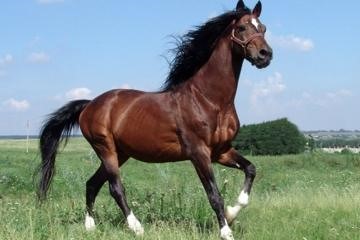Orlov-rostopchin Horeses (also called the Russian Saddle
Horses) started their developed in eighteenth century Russia when Count Alexei
Orlov bred Arabian stallions with royal Spanish and Danish mares, as well as
English Thoroughbreds, Dutch Friesians, and other breeds, to produce the Orlov
Trotter in the late 1700s.
But in addition to his Trotters, Count Orlov also used some
of his same foundation Arabians to produce a saddle horse. Orlov Riding Horses,
as they were called, averaged about 16 hands with strong, athletic bodies, but
also featured dished heads, swanlike necks and an elegant look. They were
predominantly black.
At the same time, a rival breeder, Count F.V. Rostopchin was
crossing his own Arabian stallions with Persian, Thoroughbred and Russian mares
to produce a riding horse of this own. Rostopchin's horses were smaller, with
shorter necks, but they were known for speed; his horses, too, were
predominantly black.
In the 1840s, after their deaths, both breeders' studs were
purchased by the state, and the two lines were combined into one breed, called
the Orlov-Rostopchin. Many were lost during the wars of the 20th century, but
enthusiasts have sought out survivors and are rebuilding the breed.
Source Equisearch (
www.Equisearch.com).

